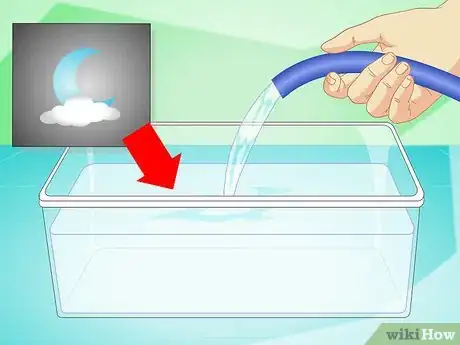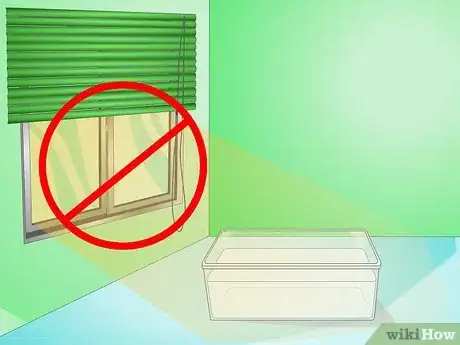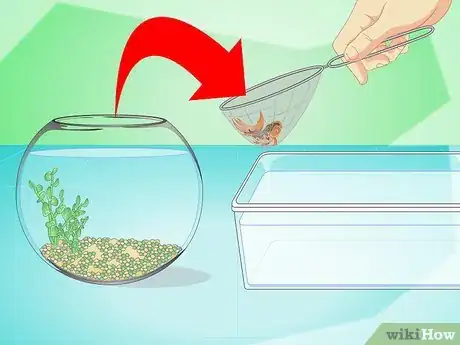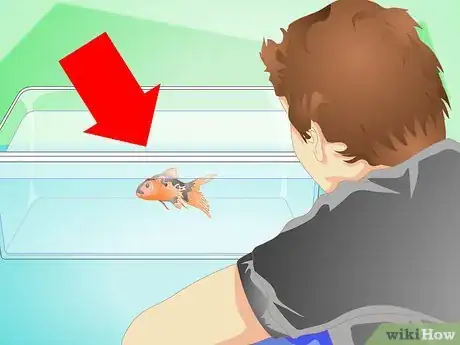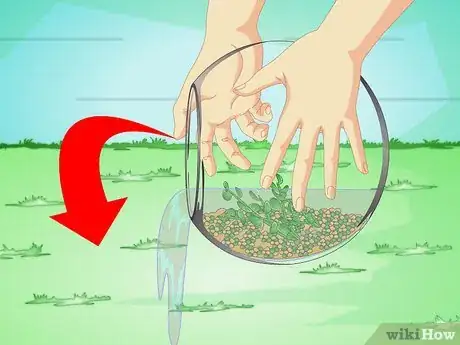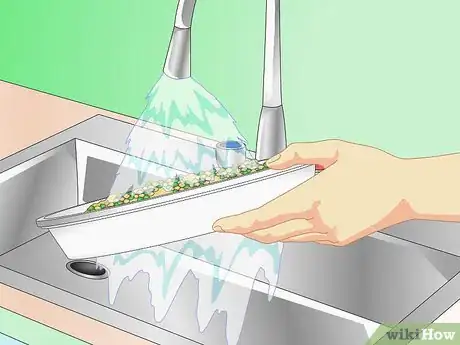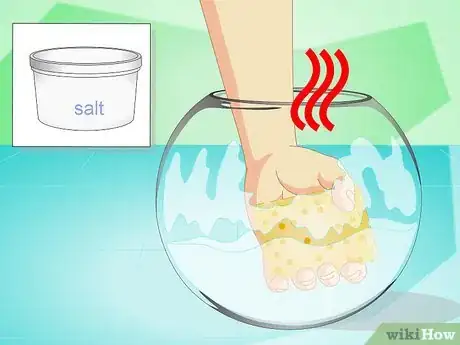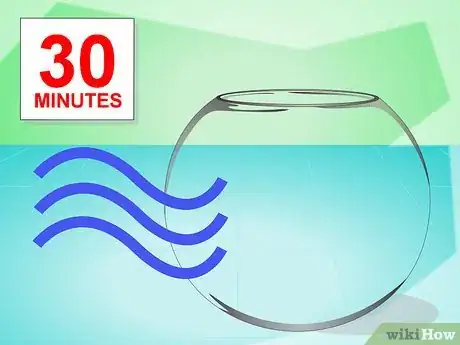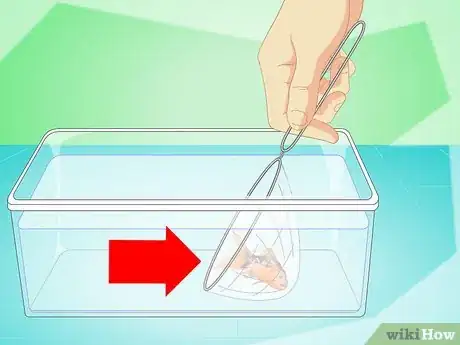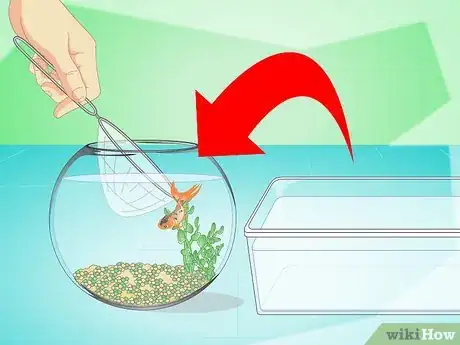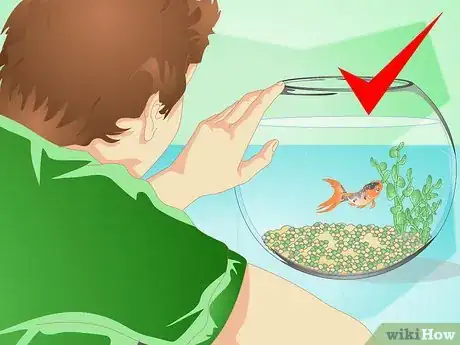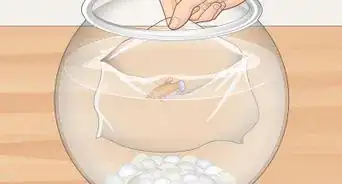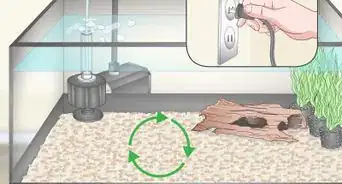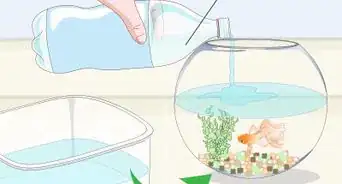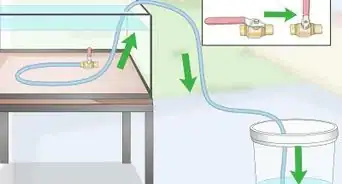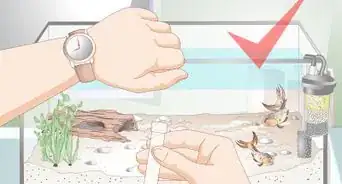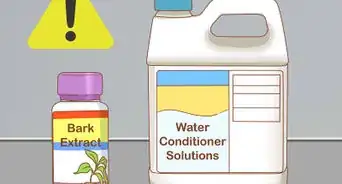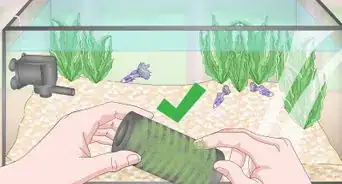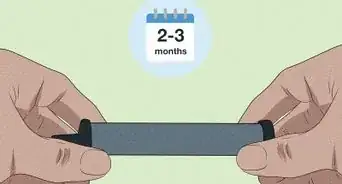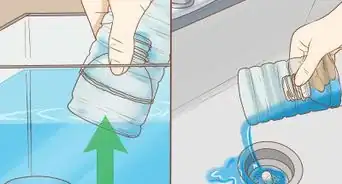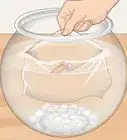This article was co-authored by Craig Morton. Craig Morton is the CEO of Aquarium Doctor Inc. based in Huntington Beach California and servicing Orange County, Los Angeles County, and the Inland Empire. With over 30 years of aquarium experience, Craig specializes in creating custom aquarium designs along with aquarium installation, service, and maintenance.
wikiHow marks an article as reader-approved once it receives enough positive feedback. This article received 12 testimonials and 91% of readers who voted found it helpful, earning it our reader-approved status.
This article has been viewed 357,186 times.
You should change the water in your fish bowl at least once per week, if not more often. Regular cleaning of a fish bowl serves two purposes. First, it will eliminate any odors coming from the bowl. Secondly, it will help keep your fish healthy. Some other factors include preventing cloudy water and algae blooms. If you notice the glass on your fish bowl is becoming hazy, then it is time to follow these simple step by step instructions.
Steps
Relocating Your Fish
-
1Find a holding tank. Your fish will need to be placed in a temporary holding tank while you clean and refill their permanent home. So find a suitably sized bowl, container or bucket that will serve as a temporary holding tank.[1]
- Use a bowl or container that has not been washed with soap, as the residue from many soaps can be harmful to fish.[2]
-
2“Age” the water. You will need to age the water you will use in your holding tank to equalize the temperature and PH balance. Let the water sit overnight after filling the temporary holding container to achieve the proper temperature and to allow the levels of chlorine in the water to neutralize.[3]
- If you don't want to wait for water to age overnight, then it is wise to treat this water with a dechlorinator. These products neutralize the chlorine levels found in most city and municipal water sources.[4]
- Make sure the water in this temporary holding tank is the same temperature as the water in the permanent tank. You may also wish to cover this tank with a lid to prevent the fish from jumping out.
Advertisement -
3Avoid direct light. Don't place the temporary holding tank in a window or under a bright light, as the heat from these sources can raise the water temperature, potentially harming your fish. Also, be sure to place your temporary holding tank in a place where children and other household pets can't bother the fish.[5]
-
4Move your fish. Take your fishnet and scoop your fish out of the fish bowl and put them into the temporary holding tank of fresh water. Use a large bowl for this holding tank so that your fish have plenty of room to swim.[6]
- When using a fishnet to transfer fish from one container to another, make sure the containers are close together. This will reduce the amount of time the fish is out of the water, thus reducing its stress levels.[7]
- Alternatively, you can use a small, clean bowl to transfer your fish. Make sure the bowl does not have soap or soap residue on it and select a rounded bowl with smooth edges. When using this method, simply dunk the small bowl into the fish tank and allow the fish to swim into it. Be patient and don't chase the fish around its bowl. This could stress the fish out.[8]
-
5Monitor your fish. While you undertake the cleaning process, make sure to keep a watchful eye on your fish in their temporary tank. Look for changes in their behavior, color and activity levels. The following signs should be an indicator that the water in the temporary tank is too warm.
- Hyperactivity
- Changes in the fish's color
- “Yawning” at the surface of the water (although some fish, like labyrinth fish, breathe this way)
- If the water is too cold, your fish may exhibit the following signs:
- Inactivity
- Sitting on the bottom
- Changes in color
Refreshing the Contents of Your Fish Bowl
-
1Remove dirty water. Dump out the old water from your fish bowl. Use a net, sieve or filter to keep the solid contents from falling out of the bowl and down your drain. You may also wish to dump the dirty water into a garden or potted plant. [9]
-
2Clean the solid contents. Scrub the gravel and other decorations in your bowl with warm water and a little bit of salt. For the best results, place the gravel and decorations on a mesh sieve and scour with hot water from your sink. Once you have done this, set them aside and allow them to cool.[10]
-
3Clean the bowl. Scrub the fish bowl with warm water and salt. Avoid soaps and cleansers that may leave chemical residue inside the tank. Then, rinse the bowl thoroughly with warm water.[11]
- If there is a noticeable buildup of lime on your fish bowl, clean it with vinegar then rinse the vinegar out with warm water. [12]
-
4Allow the bowl to sit. After washing and rinsing the fish bowl, allow it to sit for 20 to 30 minutes. This will give the glass of the bowl time to cool down from its exposure to the warm water used to wash and rinse it out. Allowing the bowl time to return to room temperature will help to ensure the bowl is the ideal temperature when the fish are returned.
Refilling Your Fish Bowl
-
1Replace the solid contents. Place the gravel and any decorations back into your clean fish bowl before putting clean water in the bowl. Make sure everything is arranged the way it was before so as not to upset the fish by changing their environment.[13]
-
2Refill the bowl with clean, aged water. Fill the fish bowl with room temperature water that has been treated or left out overnight to reach room temperature. If you choose to use dechlorinator, be careful not to spill it, as it could leave a chemical smell on your carpet or furniture.[14]
- Again, you may wish to use a dechlorinator rather than waiting overnight for chlorine levels to neutralize. If this is the case, make sure allow the water temperature to equalize before placing the fish back in the tank.[15]
- Be sure to cover the water or put it out of reach if you have pets or children. This will help you ensure the water is not contaminated while it is aging.
-
3Retrieve your fish. Scoop your fish from the temporary holding tank using your fishnet or small bowl. Try to move the fish as quickly as possible to avoid stressing the fish. Also, take care not to drop the fish or let them fall, as they can be badly injured if this occurs. [16]
-
4Place fish back in their original bowl. Place your fish back into the fish bowl that has been filled with clean water. Gently lower the fish into the water using a net or a bowl. Do not just dump the fish into the bowl.[17]
-
5Monitor your fish. Fish are most likely to experience stress and environmental or temperature related maladies during and immediately after cleaning their tank. So, keep a close eye on your fish after putting them back in their bowl to ensure they are adjusting well to their cleaned environment.
Expert Q&A
Did you know you can get expert answers for this article?
Unlock expert answers by supporting wikiHow
-
QuestionWhat's the best way to empty a larger aquarium?
 Craig MortonCraig Morton is the CEO of Aquarium Doctor Inc. based in Huntington Beach California and servicing Orange County, Los Angeles County, and the Inland Empire. With over 30 years of aquarium experience, Craig specializes in creating custom aquarium designs along with aquarium installation, service, and maintenance.
Craig MortonCraig Morton is the CEO of Aquarium Doctor Inc. based in Huntington Beach California and servicing Orange County, Los Angeles County, and the Inland Empire. With over 30 years of aquarium experience, Craig specializes in creating custom aquarium designs along with aquarium installation, service, and maintenance.
Aquarium Specialist, Aquarium Doctor Inc.
-
QuestionHow much defecated material floating around should there be before I change the water?
 Community AnswerFish waste is filled with ammonia, which can be harmful to the fish. It is recommended that you change the water at least once a week to remove defecation and avoid making your fish ill.
Community AnswerFish waste is filled with ammonia, which can be harmful to the fish. It is recommended that you change the water at least once a week to remove defecation and avoid making your fish ill. -
QuestionCan I use water from the faucet?
 CaeiiaTop AnswererYup, just make sure you use water conditioner and any other required special additive. Test the pH levels.
CaeiiaTop AnswererYup, just make sure you use water conditioner and any other required special additive. Test the pH levels.
Warnings
- Make sure the water in both your spare bowl and your fish bowl is dechlorinated and room temperature before transitioning the fish into either bowl.⧼thumbs_response⧽
- If you are using a dechlorinator, follow the manufacturer's instructions carefully for the protection of your fish.⧼thumbs_response⧽
Things You'll Need
- Fish tank
- Gravel
- Extra bowl for fish to swim in while you change the water
- Mesh sieve (optional)
- Dechlorinator (optional)
References
- ↑ http://freshaquarium.about.com/od/maintenance/a/How-To-Clean-A-Fish-Bowl.htm
- ↑ http://freshaquarium.about.com/od/maintenance/a/How-To-Clean-A-Fish-Bowl.htm
- ↑ http://www.firsttankguide.net/dechlorinator.php
- ↑ http://www.firsttankguide.net/dechlorinator.php
- ↑ http://www.petplace.com/article/fish/general/aquarium-care/how-to-care-for-your-fish-bowl
- ↑ http://freshaquarium.about.com/od/maintenance/a/How-To-Clean-A-Fish-Bowl.htm
- ↑ http://freshaquarium.about.com/od/maintenance/a/How-To-Clean-A-Fish-Bowl.htm
- ↑ http://freshaquarium.about.com/od/maintenance/a/How-To-Clean-A-Fish-Bowl.htm
- ↑ http://freshaquarium.about.com/od/maintenance/a/How-To-Clean-A-Fish-Bowl.htm
- ↑ http://freshaquarium.about.com/od/maintenance/a/How-To-Clean-A-Fish-Bowl.htm
- ↑ http://freshaquarium.about.com/od/maintenance/a/How-To-Clean-A-Fish-Bowl.htm
- ↑ http://freshaquarium.about.com/od/maintenance/a/How-To-Clean-A-Fish-Bowl.htm
- ↑ http://freshaquarium.about.com/od/maintenance/a/How-To-Clean-A-Fish-Bowl.htm
- ↑ http://www.firsttankguide.net/dechlorinator.php
- ↑ http://www.firsttankguide.net/dechlorinator.php
- ↑ http://freshaquarium.about.com/od/maintenance/a/How-To-Clean-A-Fish-Bowl.htm
- ↑ http://freshaquarium.about.com/od/maintenance/a/How-To-Clean-A-Fish-Bowl.htm
- ↑ Craig Morton. Aquarium Specialist, Aquarium Doctor Inc.. Expert Interview. 21 July 2020.
- ↑ Craig Morton. Aquarium Specialist, Aquarium Doctor Inc.. Expert Interview. 21 July 2020.
About This Article
To change the water in a fish bowl, start by moving your fish to a temporary holding bowl containing water you've left out overnight so the chlorine has had time to neutralize. Then, dump the dirty water out of the fish bowl, using a net or sieve to stop the solid items from falling out. Next, scrub the gravel and other decorations with warm water and salt. After that, wash the bowl with warm water and salt before leaving it to sit for 30 minutes. Finally, fill the bowl with room temperature dechlorinated water and return your fish to its bowl. For tips on how to clean lime from your bowl, keep reading!

